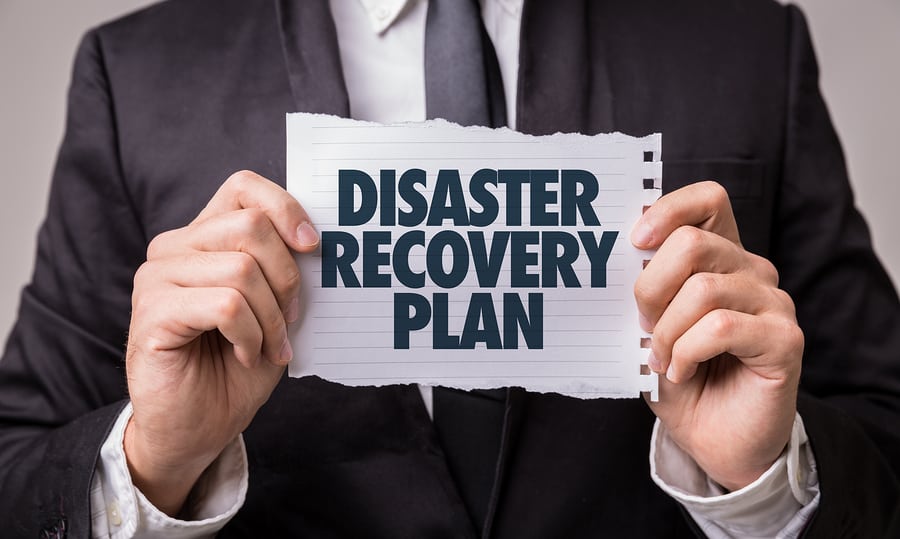By Laser 1 Technologies
Disaster Recovery For Manufacturing Companies
While Hurricane Florence didn’t quite fulfill the extremely dire predictions on the news, it was still a huge disaster by any measure. According to the Wall Street Journal, Moody’s estimates the damages from Florence to be $50 billion including damage to property, vehicle losses, and lost output, ranking it seventh among the biggest storms.
Based on Moody’s estimates, last year’s three hurricanes each caused more damage than Florence: Harvey’s tally reached $133.5 billion; Maria’s $120 billion; and Irma’s $84.2 billion.
Events like Florence can serve as wake-up calls to the manufacturing community. It’s a good reminder to ask yourself how well your business can bounce back after a disaster, whether that might be a tornado, flooding, fire, or even evacuation or a prolonged power outage.
According to CSOonline.com:
A recent study conducted by a leading insurance provider found that 48 percent of all small businesses do not have a business continuity plan. The Federal Emergency Management Agency (FEMA) estimates that 40 percent of businesses do not reopen after a disaster, and another 25 percent fail within one year. The factor underlying this failure rate is business’ fundamental under-preparedness. Compounding the problem is the lack of understanding of the scope and breadth of insurance coverage or government provisions.
Those are chilling figures: a natural disaster can represent complete business failure for 65% of businesses. Let that sink in.
The proactive manager will consider those statistics, and reframe the question from “what will it cost to recover and rebuild?” to “what are the costs of disruption?” and “what will it cost if we can’t recover our data?”
Recovery planning is essential for every industry, and manufacturing is especially vulnerable with the tremendous number of moving parts we rely on, ranging from data, to supply chains, to transportation, to fluctuations in demand.
Making a comprehensive plan for DR (disaster recovery) should be on every manufacturer’s to-do list.
Here are a few points to consider as you embark on your own DR plan.
Backup Important Documents and Contacts
If you’re not convinced of the immense importance of data backup already, allow DR planning to bring the issue home for you. Every business runs on data today, so a reliable, non-centralized data backup program has to be part of your business. Don’t be among the estimated 20-35% of companies who fail to back up data.
Identify Potential Threats to Your Company
As you embark on your DR plan, consider what threats your business will face, prioritize them, and plan accordingly. Keep an eye on the news to inform you of the problems other industries are facing, and ask whether some aspect might apply to you. Verify that your buildings are up to code. Be conscious of possible threats according to the season.
Plan on Back-Up Communication Methods
Make backup plans to ensure you can communicate among management, to staff, to vendors and customers.
Chain of command
The hierarchy of command may be impacted by a natural disaster. Discuss possible scenarios ahead of time and determine which parties will be in charge of what aspects of DR. You won’t have time to evaluate this in a thoughtful way once disaster has hit.
Review, Test and Update Your Plan.
Build your plan with the input of many internal stakeholders, and review it, test it and revise it as necessary. There are myriad resources available including templates, articles, books and consulting experts. While your investment of time and resources in the process may be significant, the process is bound to improve your day-to-day operations, and will doubtless make the difference between survival and the very real risk of failure, should disaster strike.
Financial Crises Are Also Inevitable
Natural disasters are a fact of life and we’ve got to be prepared. Dovetailing with the issue of natural disasters are economic disasters. The economy is constantly in flux, and we all need a parallel plan to prepare us for financial crisis. Check out the US Debt Clock here. With a national debt of $21.5 TRILLION as I write this, and considering that the only constant in this world is change, we’ve all got to be prepared for economic ups and downs. Stay tuned for a future column on financial DR plans.




